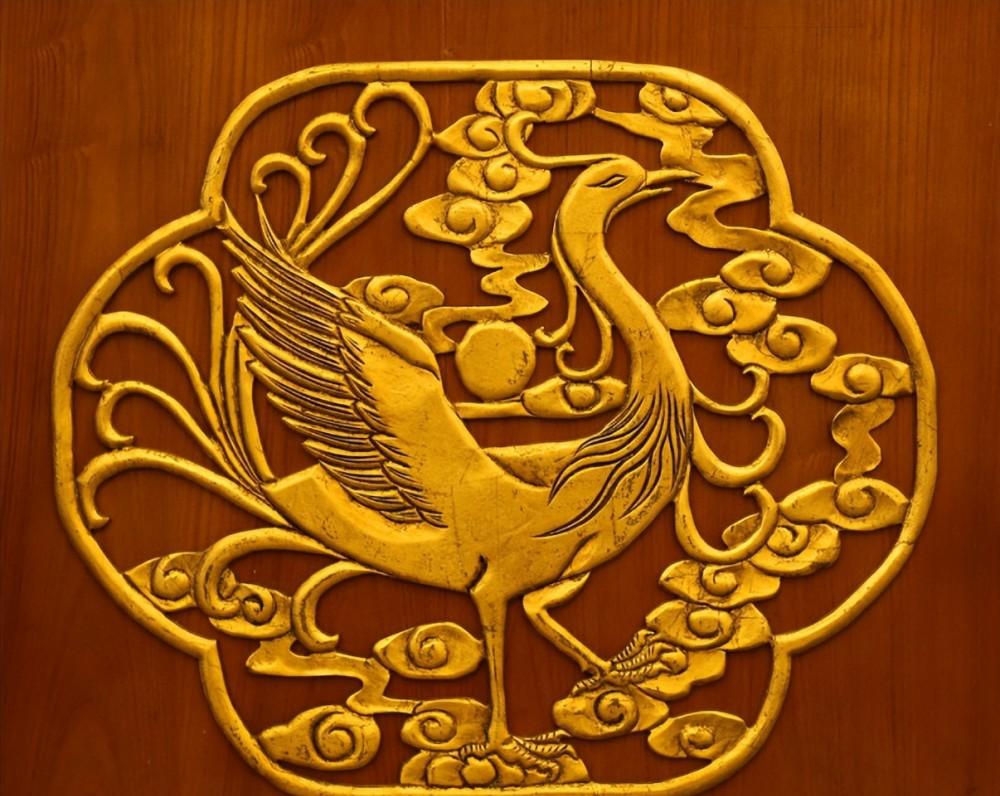In the traditional impression of Chinese, the phoenix has always been a very auspicious animal, so it has also been used in various aspects. In the ancient mythology of the mainland, the phoenix bird is a bird with mysterious potential that can bring good fortune. They are also symbols of status and status, and the emperors and empresses of various dynasties will be printed with dragon and phoenix patterns on their utensils, such as the most representative dragon and phoenix robes. Like the legendary dragons, they are sacred animals, but all along, both creatures have only existed in fairy tales, and the existence of phoenixes and dragons is controversial in their exact shape and size.

The phoenix pattern is very common in some ancient utensils, in addition to the common ceramic jade, it is also very popular in bronze, and the phoenix bird also represents wealth and charm. In ancient times, many clothing ornaments also had phoenix elements on them. The phoenix birds of different dynasties also have different characteristics and meanings, and the patterns and patterns of the birds are constantly changing, so the patterns of the birds in different periods are also different.
In the Hemudu culture more than 7,000 years ago, there was already a phoenix pattern. At that time, many utensils were engraved with phoenix patterns, and at that time, the phoenix had a very high mysterious color, and many jade objects were also printed with phoenix patterns, and these utensils were mostly unearthed in the Hongshan culture, Longshan culture and Shijiahe culture sites or burial tombs.
Most of the patterns on the jade ware of the Hongshan culture are various animals, such as dragons, birds, fish, etc., which is also the embodiment of the cultural characteristics of that time. The utensils unearthed here are mostly printed with jade owl patterns, and its carving method is relatively simple, generally carving out the approximate shape directly, and then adding bird feathers and patterns can be. The middle of the bird's body is pierced directly and then hung with a rope to wear. The appearance of the jade owl and the phoenix is not very similar, and the meaning represented is also different, but in that period, it was a spiritual creature loved by the people, and it was also considered to be a kind of phoenix.
Birds are revered as gods in the Yongsan culture, but there are not many jade objects engraved with the shape of birds, and of course it is possible that they have not been excavated so far. Most of the utensils found so far are roughly made and have been damaged almost to the point, only one bird pattern gui is more exquisite, and is now collected in the National Palace Museum in Taiwan, and the bird patterns of this period mostly make an upward flying posture, and the wings are strongly spread outwards, which looks quite turbulent.
The number of bird ornaments in the Liangzhu culture is relatively large, and the utensils of this period are not only engraved with bird patterns, but also with gods, animal face composite statues (god emblems) and simplified god emblems (animal face patterns). Most of the bird patterns of this period are more exaggerated, and the original shape of the birds cannot be seen. In the Liangzhu culture, there are also round-carved jade birds, and the wings of the birds are opened outwards, making a posture of flying upwards. The overall workmanship is relatively rough, and the materials are not very superior, but its research value is still relatively high.
There is also a cultural relic excavated from the late Western Zhou Dynasty in the museum of Pingdingshan, which is made of jade and the overall shape is eagle-shaped. This eagle-shaped jade is slightly transparent as a whole, and has a very warm luster, and has now been embedded in the statue of the city as the emblem of Pingdingshan City. In October 1986, a white jade thread eagle was unearthed, this eagle is about 2.2 cm long, 5.7 cm wide, weighs about 16 grams, and has brown spots on the top of the eagle's head and body. At that time, many craftsmen who made jade utensils liked to use beautiful colors to carve.
The eagle also makes a posture of spreading its wings and flying high, and there is a small hole in the mouth part, and the shape of this eagle is very vivid, which perfectly presents the eagle's appearance while also carving out the momentum of the eagle. This white jade eagle was also appreciated by many visitors after the exhibition, this eagle is not only an instrument, it also represents the culture of that era.
This article is from the original jewelry appraiser Yuanyuan, the picture comes from the network, if there is infringement, please contact us to delete, thank you!